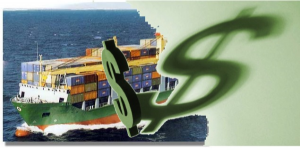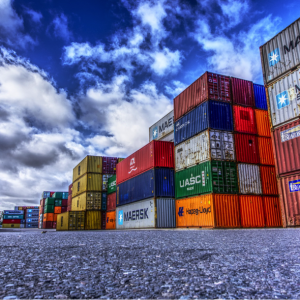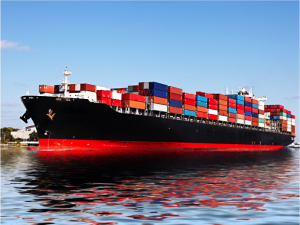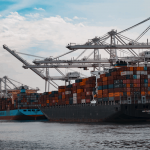Have These High Freight Rates Reached Their Peak?
 Ocean freight rates have been high in 2020. Extremely high. Ocean carriers have managed to hike freight rates in the middle of a global crisis when demand has been lower than normal by drastically decreasing capacity through blanked (cancelled) sailings. In fact, carriers have so effectively dropped supply artificially below demand – while tacking on general rate increases (GRIs), early peak seasons surcharges (PSSs), and even charges to protect cargo against being rolled to later shipments – that the shipping lines have been accused of profiteering from the pandemic.
Ocean freight rates have been high in 2020. Extremely high. Ocean carriers have managed to hike freight rates in the middle of a global crisis when demand has been lower than normal by drastically decreasing capacity through blanked (cancelled) sailings. In fact, carriers have so effectively dropped supply artificially below demand – while tacking on general rate increases (GRIs), early peak seasons surcharges (PSSs), and even charges to protect cargo against being rolled to later shipments – that the shipping lines have been accused of profiteering from the pandemic.
Many shippers are exasperated as they’ve suffered delays and unfair fees because of all the blanked sailings while at some points paying more than double what freight rates were the year before. But it’s possible shippers may have seen the worst of it. Have these high freight rates finally peaked? A small decline in freight rates here in July give hope that they may have.
Greg Miller wrote an American Shipper article last week highlighting that freight rates from China to the U.S. west coast (USWC) slipped by 4%. That’s not a huge drop, especially when considering that those rates are still 65% higher than China-USWC freight rates were over the last two years, according to the article. However, the drop, small as it may be, comes as a bit of relief to shippers who have been watching freight rates increase, reaching a peak the week before.
As Miller reports this, he asks an interesting question:
Ocean container rates remain exceptionally high but may have finally hit their ceiling. Spot rates have not only stopped rising, they’ve pulled back by single digits. Is this a new plateau or the start of a longer-term reversal as liner alliances bring more capacity back online?
Unfortunately, there is a third possibility beyond the freight rates plateauing or starting a longer-term descent options Miller ponders. It’s possible freight rates could start climbing again.
Traditionally, this is the time of year freight rates do climb. The next two months are international shipping’s peak season. Actually, the peak season can stretch beyond August and September into October and even November as well as start early in July, depending on how strong that year’s peak season is. Normally, this is the time of year that shippers increase their importing activity (exporting to0, but generally to a lesser extent with U.S. shippers) in order to have stores and shelves stocked up for the back to school and holiday shopping seasons, especially the latter.
Despite predictions of decreased demand all through 2020, at the beginning of this month, I did predict international shipping would still have a peak season this year. I expect lower than normal volume but still an increase in shipping during these key months.
There has actually been an intermodal surge. However, most experts are very cautious about volume levels in the third quarter, during what are supposed to be the peak-seasoniest of peak season months, because of the unpredictability of responses to the pandemic and surges in cases of COVID-19 slowing down economic reopening efforts. Ari Ashe wrote a Journal of Commerce (JOC) article highlighting this cautious outlook, even as positive volume signs have taken place:
Despite a surge in intermodal demand since Memorial Day, J.B. Hunt Transport Services is remaining cautious on second-half volumes as it casts a wary eye on rising COVID-19 infection rates in the US.
…
While company executives cited positive demand conditions in intermodal rail and trucking since Memorial Day after a bleak April and May, they declined to provide guidance for the third quarter because of the economic uncertainty tied to the COVID-19 crisis.
Predicting what the global economy will do is never an easy thing. Experts often get it wrong and political agendas often sway predictions, especially concerning U.S. economic demand for importing and exporting within that global framework. On top of that, international shipping, especially in terms of freight rates but certainly in terms of demand as well, is always volatile. So how can we, in the middle of a pandemic and election year, even hope to answer the question of what will happen with freight rates in the upcoming months?
The simple answer: we can’t. However, while we can’t predict with certainty what freight rates will do, there are many factors we can look at to help avoid being shocked by what’s to come. Two factors we have to examine make it clear that we can’t rule out the third option that freight rates will do more climbing in the upcoming months.
Stronger Volume Than Predicted
 It’s not surprising that predictions became very gloomy very quickly for international shipping when the novel coronavirus pandemic hit. Expectations were that international shipping volume would plummet. Certainly volume has decreased this year from what it would have been had there been no pandemic; however, volume has not fallen as much as predicted.
It’s not surprising that predictions became very gloomy very quickly for international shipping when the novel coronavirus pandemic hit. Expectations were that international shipping volume would plummet. Certainly volume has decreased this year from what it would have been had there been no pandemic; however, volume has not fallen as much as predicted.
Ashe’s JOC article helps paint a picture of how expected volume and actual volume in 2020 are not lining up:
J.B. Hunt’s intermodal volumes were down 6 percent in April and 4 percent in May, but rose 5 percent in June on a year-over-year basis.
In its first quarter call, J.B. Hunt said volume was “meaningfully down” through the first 15 days of April and that there was a chance second-quarter volumes would be down more than 10 percent versus 2019. That worst-case scenario didn’t materialize because of the strong uptick in June volume.
…
Combined laden imports into the ports of Los Angeles and Long Beach were up less than 0.5 percent year over year in June, according to PIERS, a sister product of JOC within IHS Markit. The Port of Los Angeles saw laden imports decline 6.1 percent to 369,304 TEU, but the Port of Long Beach saw inbound volume rise 8.7 percent to 332,722 TEU.
Stores closing down and many people not being able to work has certainly decreased volume. However, while in-person shopping has decreased, online shopping has increased. Perhaps online shopping, many businesses’ ability to adapt to allowing their employees to work from home, and trillions of dollars in government stimuli helped curb the expected decrease of demand for international shipping. Additionally, importing and exporting pandemic-related items like personal protection equipment (PPE) added volume too.
There’s reason to believe volume won’t be as strong during these upcoming peak season months as they would be in a “normal” year; however, stores are reopening and those big shopping seasons are on the way. We should expect some volume increase during these upcoming peak months. Increased demand typically puts upward pressure on freight rates.
There’s a question to ponder here: if the experts underestimated volume to this point, could they continue to do so through the rest of the year?
Carrier Discipline
 The one thing giving carriers the benefit of the doubt of not profiteering from the pandemic is that volume or demand didn’t sink as low as experts predicted. The carriers did an exceptional job of removing capacity from trade routes in order to make supply closer to the projected demand. It could be argued that they did not intentionally sink supply under demand levels, demand just didn’t drop as low as expected.
The one thing giving carriers the benefit of the doubt of not profiteering from the pandemic is that volume or demand didn’t sink as low as experts predicted. The carriers did an exceptional job of removing capacity from trade routes in order to make supply closer to the projected demand. It could be argued that they did not intentionally sink supply under demand levels, demand just didn’t drop as low as expected.
Still, because all the major carriers are grouped into their alliances, they were basically able to coordinate their supply manipulation. That basically means the shipping industry is in an oligopoly situation. Without true competition in the market, carriers can control freight rates.
However, to maintain that freight rate control, carriers have to maintain discipline. It was not long ago that carriers would undercut each other’s freight rates or add competing capacity to shipping lanes that pushed freight rates down to record lows. Even in the recent years of just 3 carrier alliances controlling the oceans, carriers have fallen into rate wars while pushing toward being bigger, creating overcapacity. It is not inconceivable that the will power of one or two carriers breaks, starting rate wars that undercut all the progress they’ve made in raising freight rates.
Over the last couple years, unfortunately for shippers looking for lower rates, carriers have shown an impressive level of discipline to control capacity and rates. While I’m not willing to go so far as to say carriers definitely will maintain their discipline, they have finally showed themselves capable over an extended period of time (and during extra difficult periods between the pandemic and the U.S.-China trade war).
Prediction
While I want one of Miller’s options to be true that we’ve either seen the peak of freight rates in 2020 or that rates are about to go on a longer period of decline, I think we probably haven’t seen the peak of freight rates yet for the year.
It could be recency bias that makes me think carriers are likely to maintain discipline. For years, they appeared completely unable to do so. I wouldn’t even be surprised to see one of the biggest companies like Maersk, COSCO, or MSC purposely throw a wrench in the works by undercutting rates and adding capacity in order to take competitors’ market share and force some other carriers out of the market altogether. However, carriers are probably very happy to be pushing freight rates way up, setting themselves up to make billions when they were predicted to lose billions. It seems unlikely they’d want to mess up the good thing they have going for themselves right now.
Still, even working together as the carriers do in their alliances, I don’t think they’ll be able to manage perfect control over capacity in relation to demand throughout the rest 2020, and the peak season in particular. As unpredictable as this year is, I expect surges and drops in volume that will be impossible to see coming. While I think they’ll see more freight rate gains in the upcoming months, I believe there will be a couple moments when they react too strongly to volume increases and demand will fall suddenly under capacity, causing big drops in freight rates that they’ll have trouble covering with PSSs, GRIs, or some other fees like clean fuel surcharges. Of course, freight rate volatility is no new thing. Then again, it seems like it would be a pretty new thing in 2020 when we’ve pretty much only seen high freight rates.
Bottom line prediction: We haven’t seen the highest freight rates of the year yet, but volatility will give us moments of opportunity for much more reasonable rates.




